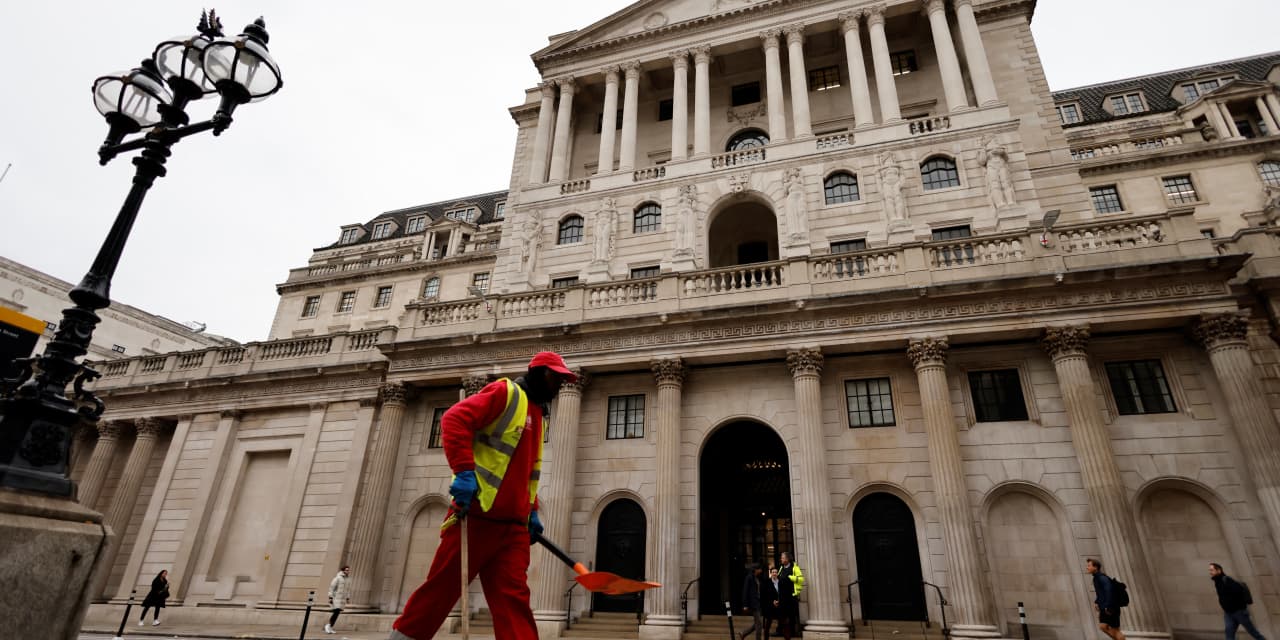Inflation is still uncomfortably high for the Bank of England.
AFP via Getty Images
The Bank of England is expected to keep interest rates unchanged on Thursday, following in the footsteps of the Federal Reserve and European Central Bank.
Like the Fed, the BOE is battling inflation that hasn’t returned to its target despite a series of rate hikes. Between December 2021 and August this year, the U.K. central bank has increased borrowing costs at 14 straight meetings. Now, officials say they are taking a more cautious approach as they evaluate the effects of previous hikes.
In September, headline inflation in the U.K. was 6.7% year over year, more than three times the bank’s 2% target. Price increases aren’t slowing as quickly as they are in the U.S. or Europe, where inflation is at 3.7% and 2.9%, respectively.
Core inflation, which strips out volatile food and energy prices, also remained uncomfortably high at 6.1% in September. Inflation won’t return to its target until 2025, according to a BOE forecast that will be updated this month.
The U.K.’s interest rate stands at a 15-year high of 5.25%. And it might stay there for some time. But don’t expect Governor Andrew Bailey, set to speak at a press conference after the decision, to put a fine point on whether rate hikes are over. While inflation is still uncomfortably high, economic growth in the U.K. is much weaker than it is in the U.S., raising the chances of recession. The central bank expects the U.K. economy to expand by 0.5% this year and next.
Bailey, like the Fed’s Jerome Powell, is likely to focus on the need to keep rates high while the consequences of previous rates play out. And Bailey is also like to preserve the option to raise rates as needed.
BOE Chief Economist Huw Pill said he prefers the path of interest rates to look like the flat-topped Table Mountain in South Africa, with the mountain’s steep ascent representing the hikes that have already occurred and its long, flat top representing rates being held steady for a period.
However, given the poor state of the U.K.’s economy, ING economists see the BOE cutting interest rates mid-next year to support economic growth.
Write to Brian Swint at [email protected]
Read the full article here










